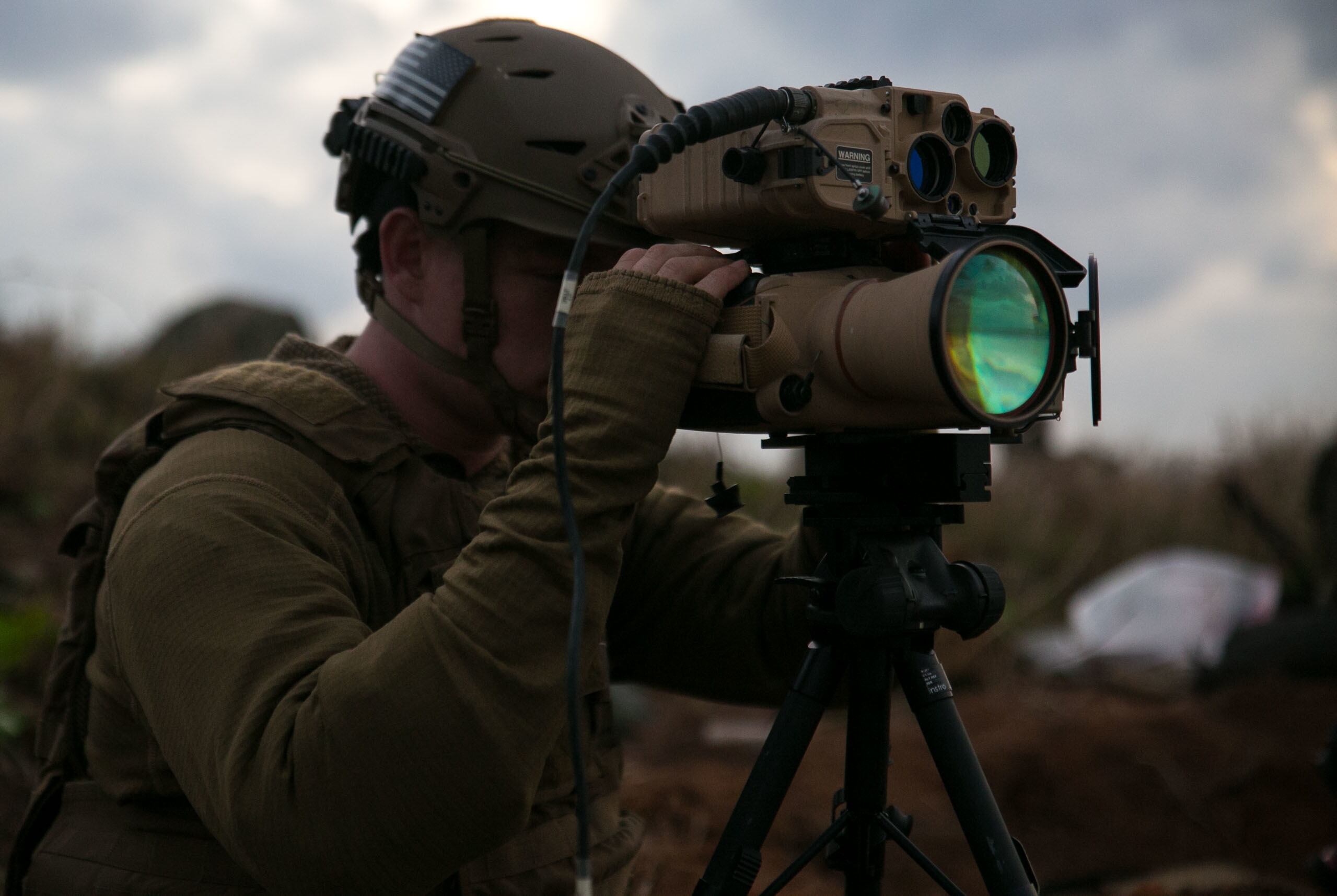The Corps plans to greatly boost the lethality and responsibility of one of its most fundamental building blocks of combat power by ensuring Marines can accurately direct and control mortar, field artillery, naval surface fire support and provide accurate targeting data for close-air support.
To do that, the Corps plans to qualify at least one Marine in every rifle squad as a joint fires observer, or JFO, according to the Corps’ recently published 2018 aviation plan.
The Marines need a whopping 648 JFOs to fill every active-duty rifle squad across the Corps and 243 in the reserves. Across the Corps’ ground combat element to include recon and armor, the Corps wants a total active 1122 JFOs and 494 in the reserves. That’s a lot of folks qualified to rain down accurate precision fire on enemy forces.
JFOs are qualified to “request, adjust, and control surface‐to‐surface fires, provide targeting data in support of Type 2 and 3 close air support terminal attack control and perform autonomous terminal guidance,” according to the Corps’ aviation plan. “The objective is to have at least (1) JFO at each rifle squad” who will work in conjunction with a Joint Terminal Attack Controller, or JTAC.
JFOs are generally responsible for directing and controlling artillery and naval fire support and are certified to provide targeting data to JTACs for specific types of close-air support missions.

Type 2 and 3 close-air support missions refer to various conditions an air controller may find themselves in when requesting air support. Those conditions include whether the striking aircraft can be seen, how the enemy target was located, and whether multiple strikes need to be made in a single engagement.
JFO Marines can push a CAS mission on the ground, but clearance of fires must be provided by a JTAC or Forward Air Controller.
The JTAC or air controller does not need to be co located with the JFO, only situationally aware enough to control the attack. Meaning a JFO with his or her squad can be far removed from his platoon or company and radio in an airstrike to be cleared by a JTAC.
Still, the Corps’ plan shifts a huge responsibility onto the shoulders of its rifle squads and may hint at Marine Corps preparations to prepare its forces for a distributed fight where the smallest combat units will need to better trained and equipped to survive.
“I think the range and lethality of infantry is going to get much longer,” Marine Corps Commandant Gen. Robert B. Neller said at a national security discussion host by Brookings Institution on April 26.
The Marines are rapidly modernizing a force that has been stuck in the quagmire of counterinsurgency conflicts for the last 16 years. New technology on the horizon will afford better accuracy for infantry weapon systems and more protection for grunts, Neller said.
New equipment is being doled out to grunts to include drones for every squad to enhance situational awareness and counter threats on the battlefield.
“The gear is better, it’s lighter, it’s more durable,” Neller said.
And the Corps is already amid plans to equip its grunts to rapidly acquire, range and call in fires on enemy forces.
Over the summer the Corps picked a small rifle mounted laser range finder called the Integrated Compact Ultralight Gun-mounted Rangefinder, or I-CUGR, manufactured by Safran Optics 1.
This device can rapidly range targets at nearly 1,500 meters. The Marines plan to field nearly 1,800 devices in 2018.
The Corps also wants to push small handheld table devices that improve battlefield situational awareness and can aid Marines in acquiring and bringing in precision fires on enemy forces.
However, there are drawbacks to all the new changes and tech being dished out for grunts.
The added capabilities and responsibilities is pushing the boundaries of the traditional mission of the grunts to close with and destroy the enemy.
Grunts are slowly morphing into an elite squad capable of conducting missions normally the purview of elite special operators and there is a potential to overburden the infantry.
“The information flow that is available to the squad leader, to the platoon commander, company commander is to the point I have some concerns with,” Neller said at Brookings. “You can have too much information. We are making some organizational changes to look at that.”
The JFO course is just under two weeks in length, according to a description of the course on the Expeditionary Warfare Training Group, Atlantic’s website. Currently, a Marine must be at a minimum a lance corporal to take JFO training and a sergeant to become a JTAC.
Shawn Snow is the senior reporter for Marine Corps Times and a Marine Corps veteran.





